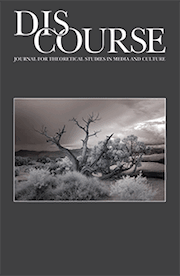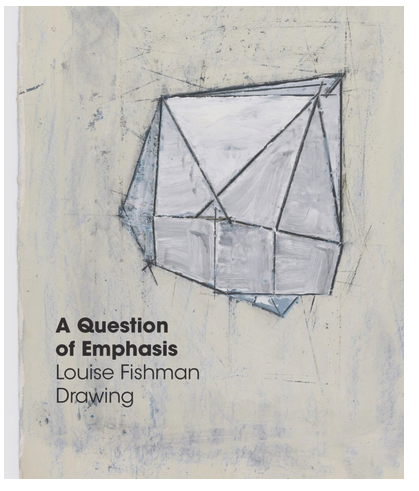Dragging Away: Queer Abstraction in Contemporary Art
Duke University Press - 2022
Dragging Away: Queer Abstraction in Contemporary Art argues that abstraction is a tactic of queering in contemporary art that contributes to critical politics of gender, sexuality, and race, while refusing oppressive representational logics. Focusing on the formal and material innovations of current queer and feminist artists, this book attends to their drag on certain loaded modernist strategies—the hard edge, the grid, color, and the readymade—in order to draw out their social and political capacities and relevance for the present. Lancaster pursues comparative analysis between modernist and mid-century abstract artworks and their contemporary interlocutors, demonstrating how abstraction does queer work through visual and material processes of dragging that expose the violence of abstraction while at the same time exploding processes of categorization and signification. Rather than rescue the problematic potential of abstract forms and tactics that can do harm, Lancaster attends to the mixed feelings at play in contemporary politics of abstraction, engaging with abstraction affectively rather than iconographically. Arguing against the tendency to reduce abstract form to a bodily sign or biographical symbolism, this book makes a methodological intervention in the field of art history by combining a politically-driven formalist and materialist analysis with queer, feminist, and critical race theories in order to take these artists’ formal and material experimentation seriously as social and political praxis. Artists whose works are discussed include Linda Besemer, Nancy Brooks Brody, Harmony Hammond, Angela Hennessy, Every Ocean Hughes, Xylor Jane, Tiona Nekkia McClodden, Ulrike Müller, Sheila Pepe, Lorna Simpson, Shinique Smith, and Carrie Yamaoka.
PEER-REVIEWED ARTICLES
The Wipe: Sadie Benning’s Queer Abstraction
Discourse: Journal for Theoretical Studies in Media and Culture 39.1 (2017): 92-116
Included in Getsy and Gossett, A Syllabus on Transgender and Nonbinary Methods for Art and Art History, Art Journal, 80, no. 4 (2021): 100-115.
Sadie Benning’s Wipe paintings raise questions about the viability of abstract painting for a queer feminist art practice. Benning deploys abstraction in ways that speak to the specificity and difference that is so crucial to queer projects, while also refusing the focus on singularity of experience that places the burden of representation on artists marked “minority.” Using close formal analysis and comparisons with high modernist works by Robert Ryman and Mark Rothko, this article elaborates Benning’s tactic of “the wipe” as a challenge to the history of abstraction, a deliberate tool for reckoning with oppressive structures and difficult forms of history without wiping away the grit or residue of its contact in the present.
Feeling the Grid: Lorna Simpson’s Concrete Abstraction
ASAP/Journal 2.1 (2017): 135-159
The grid operates as an aesthetic and political tactic in the photo-based felt installation works of Lorna Simpson, and their refraction of Agnes Martin’s iconic grid paintings allows for alternative readings of the queer and anti-racist potential therein. Carrying the difficult history of photographic grids, which produce raced taxonomies of their subjects, Simpson’s grids refuse to picture bodies. But far from only a tool of normalization and surveillance, the grid also has political possibilities as a vector for queer forms of relationality and excess.
INVITED ESSAYS
Trans Abstractions, Decomposing Figurations: Young Joon Kwak and Kiyan Williams
Texte Zur Kunst 129 “Trans Perspectives” (Spring 2023)
This essay argues that the recent sculptures and installations of Young Joon Kwak and Kiyan Williams offer trans and crip tactics of abstraction that produce fugitive, expansive conceptions of embodiment through decomposing and disintegrating figurations.
Glitching Out with Linda Besemer
in Linda Besemer: StrokeRollFoldSheetSlabGlitch, edited by Kristina Newhouse, Kleefeld Contemporary Art Museum, California State University Long Beach, CA, 2022
Taking up Linda Besemer’s “glitch” paintings within the postdigital field of art and scholarship, this essay considers how Besemer’s “glitching out”—as a tactic of abstraction—offers queer, feminist, transgender methods for undoing normative technologies that control gender and sexuality.
Close Proximity, Intimate Distance: the Abstracting Effects of Photographic Contact
The Wet Archive: History, Desire and Photography’s Liquid Intelligence, curated by Jill H. Casid. University of Wisconsin-Madison and the Department of Art History, January 2015
Considering Andy Warhol’s intimate-yet-impersonal Polaroid portraits and Ralph Gibson’s abstracted formal studies of inanimate objects included in The Wet Archive alongside Polaroids by Robert Mapplethorpe and Patricia Cronin, this essay reckons with the seemingly paradoxical possibilities of the formal device of the close-up.
REVIEWS & ROUNDTABLES
Trans Visibility and Trans Viability:
A Roundtable
Journal of Visual Culture 21.2 (2023): 297-320.
Catalogue review: A Question of Emphasis: Louise Fishman Drawing
ASAP/J January 6, 2022
Exhibition review: Queer Abstraction at the Des Moines Art Center
ASAP/J July 16, 2019
Review of the “Queer Abstraction” exhibition and catalog, curated by Jared Ledesma at the Des Moines Art Center.








